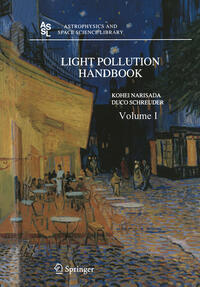
This book deals with light pollution and about the ways to reduce it. Light pollution is one of the negative side-effects of artificial outdoor lighting. The term light pollution is an unhappy one, but as no better alternative seems to exist, it will be used throughout this book. The function of all outdoor lighting is to enhance the visibility or the aesthetics in the nighttime environment. The light should come where it is needed. If not, it is spilled, causing economic and environmental losses as well as disturbance and discomfort. The overall effects are termed 'light pollution'; a major form of light pollution is the glow extending over the night sky. Sky glow is discussed in many astronomical textbooks and in many popular brochures. The present book is primarily aimed at those responsible for outdoor lighting installations. Thus, an engineering approach has been chosen. The level of the book is that of 'college' or 'University level'. The book is organized in two parts. The first seven chapters cover the areas of general interest, and conclude with recommendations. The second part deals with the scientific and engineering elaboration of the first part. A number of examples are included that refer to specific outdoor lighting installations and projects that are directly related to the reduction of light pollution. Finally, some information is given about the authors.